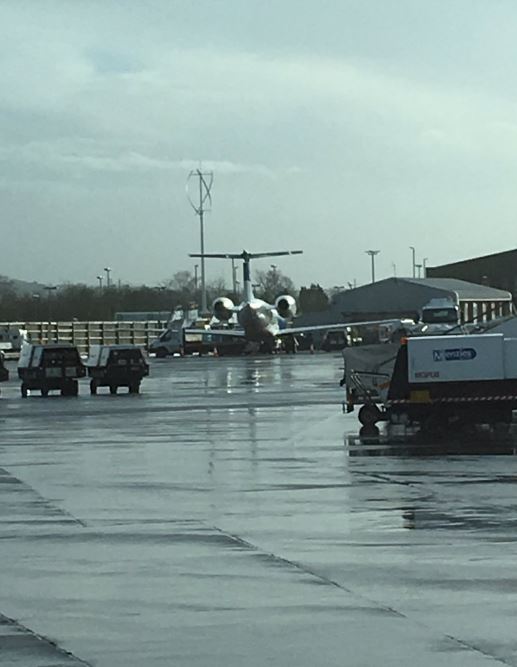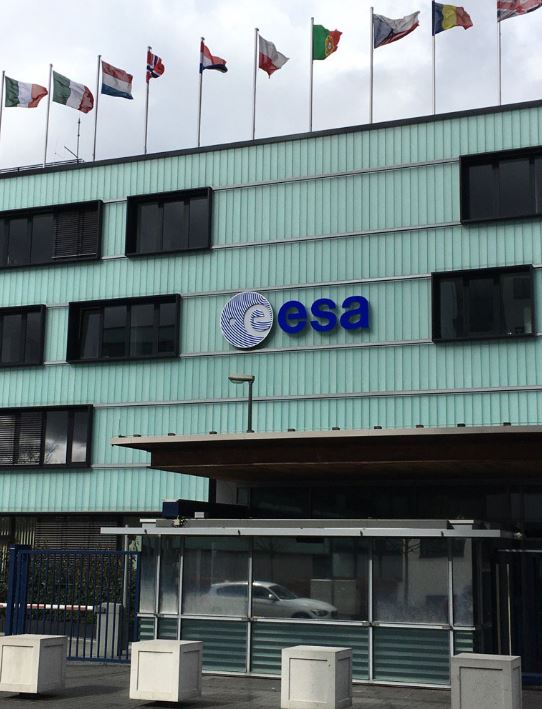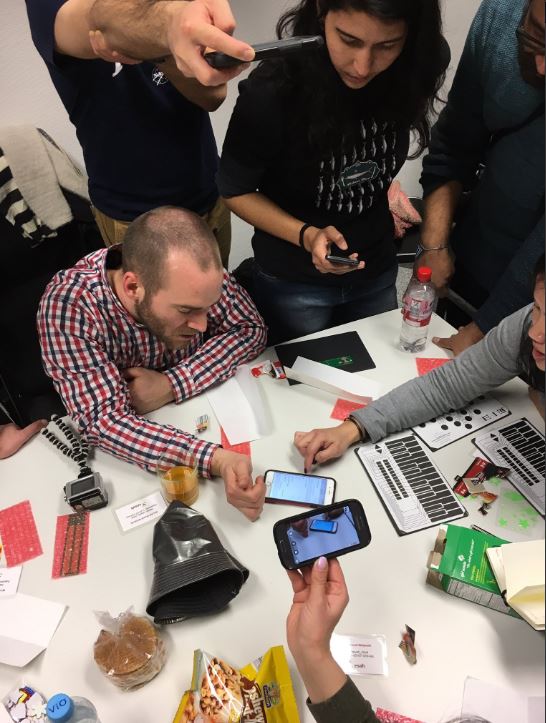So last month I wrote about how I would be attending the launch of the Sentinel-2b satellite. Well, here we are now, after the event, and what an amazing event it was! So many fantastic memories, and amazing people.
Setting Off:
I left England early on the morning of Sunday 5th, on what I can only describe as a toy plane (there were at most 16 people on the flight!) Nevertheless it was a very comfortable flight with lots of leg room.

Arriving at Frankfurt airport was a little bit of a culture shock, not only was it my first trip to Germany it was also my first time at an international hub airport....needless to say I got lost! Eventually however I managed to meet up with my baggage, and make my way to my hotel, about 20 minutes away in Darmstadt itself.
It was overcast and extremely windy but I thought it would be worth getting out of the hotel room and acquainting myself with the surroundings so I went for a walk. I knew the ESA space centre was not too far from my hotel, so off I went.

A little way down the road, I found it. This was the real deal, where all the space magic happens for the European Space Agency. This is where I would be spending Monday afternoon-evening and onwards!!
Sunday evening saw a meeting of a small group of the visiting #Sentinerds (a phrase that would later be coined!) to participate in the NASA Datanauts activites lead by Cindy Chin. The evening got the group looking at the creation of a little battery operated Bluetooth connected board on which is stuck a conductive paper in a couple of patterns. The board is then linked with a mobile device and paired with the app which can then have functions customised with archives of cool NASA sounds and pictures. It was a really great way to get to know some of the group, which was promptly followed by food and drinks in a local German brewery!

LAUNCH DAY (almost!)
Launch day was here, well practically, there was still over 10hrs left on the countdown but we were all assembling at the ESOC ready for a day of space related activities.
The day was started with a tour of various areas of the operations centre (a full set of images can be found HERE) from Space debris monitoring to the actual main mission control room. We saw it all! Apart from those really cool rooms which had large "RESTRICTED" signs in bright red and stern looking guards outside....we didn't see those.
The space debris monitoring station does exactly what it says on the tin, monitors space junk. This is an ever increasing issue in the space industry, and most countries have now signed up to the "25 year" agreement which sees all satellites put into an orbit at a height such that it will burn up in the atmosphere within 25 years. This will hopefully control and addition to the problem, but wont solve the issue of the millions(!) of pieces of junk whipping around the Earth at speeds in excess of 11km per second.

Moving on, we visited many of the secondary mission control areas, including this one which is currently controlling Mars Express, and until recently is where the Rosetta mission was controlled from, known as the Planetary Mission Control;

Moving from building to building was also a pretty interesting experience. There are scale models of rockets, satellites and other space goodies everywhere. This one was pretty apt though, a life size replica of Sentinel-2b which at that very moment was sitting atop her oversized firework on the other side of the planet.

One of the last areas we visited on the site tour was the "Astrophysics Platforms Mission Control" where some of our best loved astrophysical missions are controlled. Gaia, XMM-Newton among others. While we were visiting they were just receiving a down link of data from Gaia 'Hot off the press' as it were.
Fun fact about XMM-Newton: Its the only x-ray telescope where the output is live. They have monitors up in the mission control where you can watch in real time exactly what the telescope itself is looking at in space. No data recombination or processing, straight up x-ray images of the universe. Pretty cool right!!

NOW! Last but least, the place we had been waiting for the most. The main mission control centre. This is where the mission controllers would be sitting in a few hours time actually running the post-launch operations. It really was as cool as you might think. Like being on the set of a Hollywood movie, but for real!

The tour was now basically complete. We were taken back to the conference centre for mingling, socialising and networking. There were over 100 social media advocates present and all having the times of their lives. People from all walks of life, from over 47 nations, all brought together by a mutual love of space. It really showed what the European Space Agency stands for!

With launch time rapidly approaching we all moved up to the ESOC's large conference room which had been set up with displays and models, seating and food ready to see in the new day and watch the much anticipated launch of Sentinel.
The launch itself was approximately 2:49 local time, everyone was crowded around the large TV monitors to help count the last 10 seconds before the Vega rocket jumped off the pad.(Interesting fact: the tradition at ESOC is that there is no cheering at the time of launch, as they don't count a launch successful until it has been delivered into orbit, and sent its first signal back) Needless to say, there was a small rupture of cheering and applause when the clock hit '0' and Vega was on its way.

We didn't have to wait long until confirmation that separation had occurred and Sentinel was in orbit. A short time after that first contact, followed confirmation of solar panel deployment then the cheering and applause really happened!
The time was now getting on for 4:30am local time, and we started to disperse back to our hotels for much needed rest. What an amazing 24 hours it had been. Such an inspiration to see what can happen when nations unite and work collectively. I made many new friends and contacts and hope to be able to share other launches with them in the future. For anyone reading this, I would highly highly suggest signing up for the next event. It really is a life changing experience.

